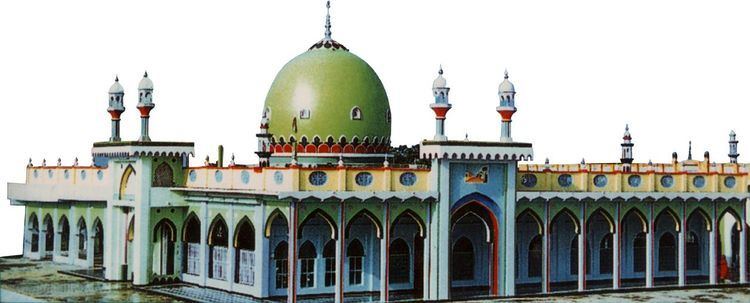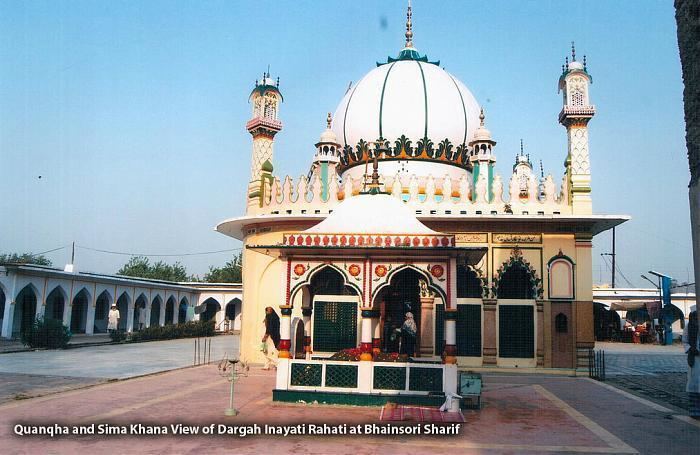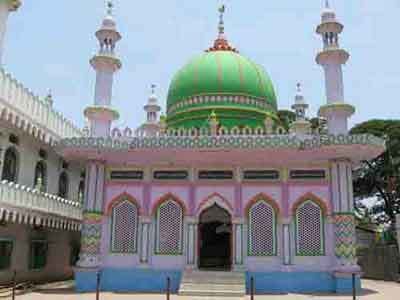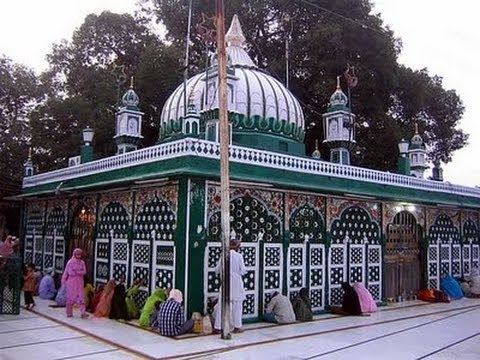 | ||
Indian dargah sailani baba dargah khandwa
A Dargah (Persian: درگاه dargâh or درگه dargah, also in Urdu) is a shrine built over the grave of a revered religious figure, often a Sufi saint or dervish. Muslims may visit the shrine for ziyarat, a term associated with religious visits and pilgrimages. Dargahs are often associated with Sufi meeting rooms and hostels, called khanqah or hospices. They usually include a mosque, meeting rooms, Islamic religious schools (madrassas), residences for a teacher or caretaker, hospitals, and other buildings for community purposes.
Contents
- Indian dargah sailani baba dargah khandwa
- Haji ali dargah mumbai haji ali haji ali mumbai dargah piya haji ali haji ali dargah
- Etymology
- Throughout the non Arab Muslim world
- Worldwide
- References

Some religious scholars argue against the practice of constructing over graves and turning them into places of worship, and consider it as associating partners to God or shirk, though visiting graves is encouraged. Muhammad (according to some sects) forbade turning graves into places of worship. but encouraged visiting the graves to remember life after death (sahih Muslim 977).

Haji ali dargah mumbai haji ali haji ali mumbai dargah piya haji ali haji ali dargah
Etymology
Dargah is derived from a Persian word which literally means "portal" or "threshold."

Some Sufi and other Muslims believe that dargahs are portals by which they can invoke the deceased saint's intercession and blessing (as per tawassul, also known as dawat-e-qaboor or Ilm e dawat Still others hold a less important view of dargahs, and simply visit as a means of paying their respects to deceased pious individuals or to pray at the sites for perceived spiritual benefits.

However, dargah is originally a core concept in Islamic Sufism and holds great importance for the followers of Sufi saints. Many Muslims believe their wishes are fulfilled after they offer prayer or service at a dargah of the saint they follow. Devotees tie threads of mannat (hope) at dargahs and contribute for langar and pray at dargahs. Dargahs dotted the landscape of Punjab even before the partition of the Indian Subcontinent.

Over time, musical offerings of dervishes and sheikhs in the presence of the devout at these shrines, usually impromptu or on the occasion of Urs, gave rise to musical genres like Qawwali and Kafi, wherein Sufi poetry is accompanied by music and sung as an offering to a murshid, a type of Sufi spiritual instructor. Today they have become a popular form of music and entertainment throughout South Asia, with exponents like Nusrat Fateh Ali Khan and Abida Parveen taking their music to various parts of the world.
Throughout the non-Arab Muslim world

Sufi shrines are found in many Muslim communities throughout the world and are called by many names. The term dargah is common in the Persian-influenced Islamic world, notably in Iran, Turkey and South Asia.
In South Africa, the term is used to describe shrines in the Durban area where there is a strong Indian presence, while the term keramat is more commonly used in Cape Town, where there is a strong Cape Malay culture.
In South Asia, dargahs are often the site of festivals (Milad) held in honor of the deceased saint at the date of his Urs, which is a day dedicated to the saint which usually falls on the saint's death anniversary. The shrine is illuminated with candles or strings of electric lights at this time.
In China, the term gongbei is usually used for shrine complexes centered around a Sufi saint's tomb.
Worldwide
There are many active dargahs open to the public worldwide where aspirants may go for a retreat. The following is a list of dargahs open to the public.
